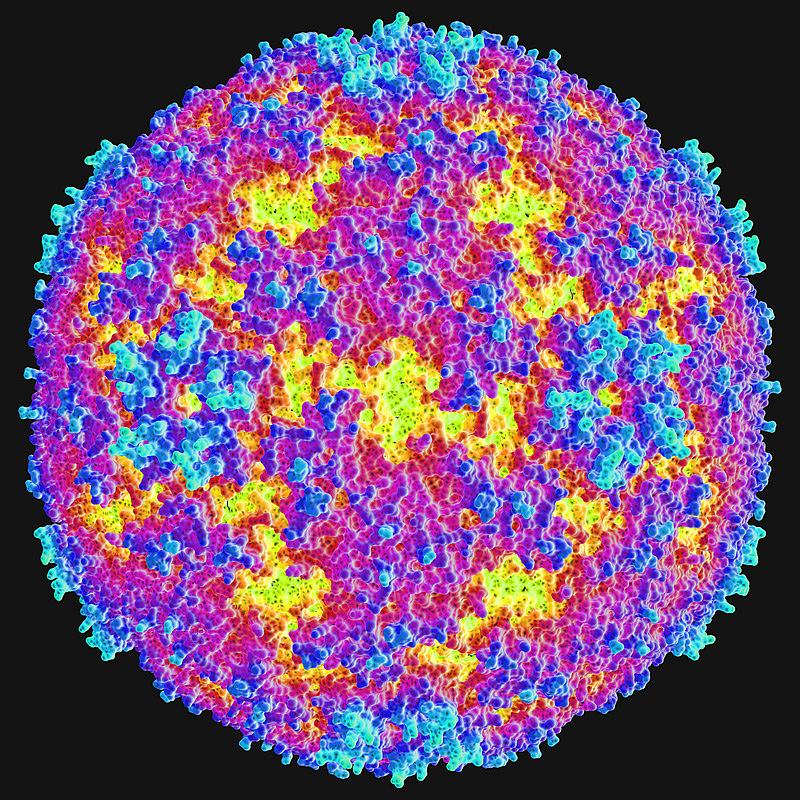New study sheds light on link between virus and kids’ paralysis

An image of an enterovirus.
As the cases of children with paralyzed limbs quickly mounted last year, it became clear that an urgent new medical mystery was confronting doctors. By October, the blitz of related news stories was enough to seed any parent’s nightmares. Is their little one’s seemingly run-of-the-mill runny nose just that, or a harbinger of something much worse?
Some of the children showing signs of polio-like paralysis in their limbs also tested positive for enterovirus D68, which has been known to doctors for half a century, but not as a cause of paralysis. Had the virus mutated and become far more dangerous? Scientists weren’t sure.
A new study out this week from researchers at University of California San Francisco sheds new light on the question by showing that a new strain of the D68 virus, dating back to 2010, is strongly linked to at least some cases of limb paralysis.
For the study, published in the journal Lancet Infectious Diseases, researchers focused on children from hospitals in Colorado and California who showed signs of acute flaccid myelitis, a condition marked by weakness or paralysis in the limbs. Researchers compared patients with the condition who tested positive for the D68 virus with those who had the condition, but tested negative. They also analyzed the genetic sequence of the D68 virus among the kids who had it.
The study found that nearly half of the 25 children studied with acute flaccid myelitis showed signs of being infected with the same mutated strain of enterovirus D68. (The mutations show similarities to other strains of poliovirus known to cause paralysis.) That doesn’t absolutely rule out other causes, but as UCSF’s news service points out, the researchers couldn’t find any other explanations for paralysis in these kids:
The finding strengthens the association between enterovirus D68 infection and acute flaccid myelitis, which developed in only a small fraction of those who got sick. The scientists could not find any other pathogen capable of causing these symptoms, even after checking the cerebrospinal fluid for every known infectious agent.
So the latest evidence suggests that this new strain of enterovirus is linked to limb paralysis. But most of the kids who get sick with the virus don’t develop such severe symptoms. For example, the study looked at two siblings who were both infected with the same D68 strain, but only one of them developed paralysis in her arms.
The number of severely affected children is small. According to the CDC, a total of 1,153 cases of the D68 virus were confirmed from mid-August until Jan. 15, almost all children. By contrast, only 115 children have developed symptoms of polio-like paralysis, according to The New York Times.
The answer to why some kids develop limb problems and others don’t may have to do with how the virus interacts with a particular child’s immune system. Dr. Charles Chiu, one of the study’s authors and director of UCSF’s Abbott Viral Diagnostics and Discovery Center, said of the study's results:
This suggests that it’s not only the virus, but also patients’ individual biology that determines what disease they may present with. Given that none of the children have fully recovered, we urgently need to continue investigating this new strain of enterovirus D68 and its potential to cause acute flaccid myelitis.
That urgency continues for the families of children suffering the worst outcomes — recovery has been elusive for many. But the fact that only a very small subset of kids who get the virus will suffer some kind of paralysis is encouraging news from a broader public health perspective. And that context is worth reminding readers and listeners in news stories that can otherwise leave parents deeply unsettled.
Photo by AJ Cann via Flickr.
Related post
News cycle pushes enterovirus spread into panic zone

